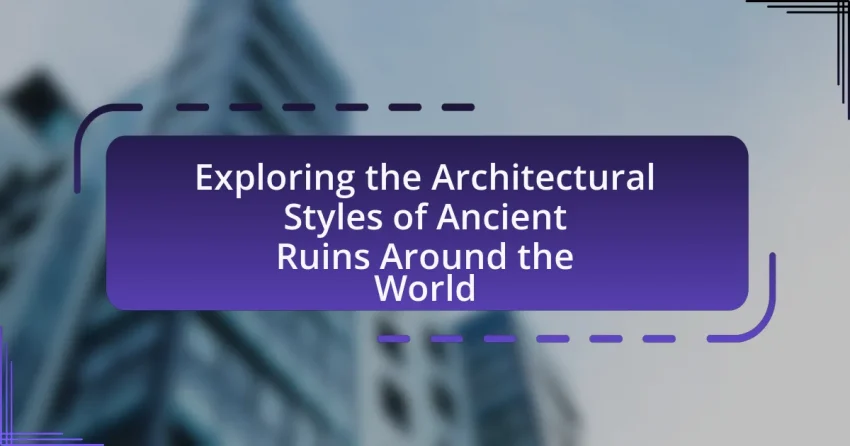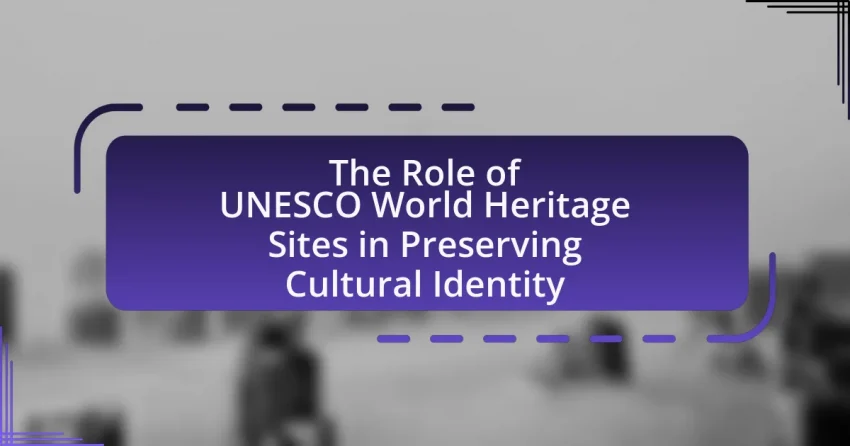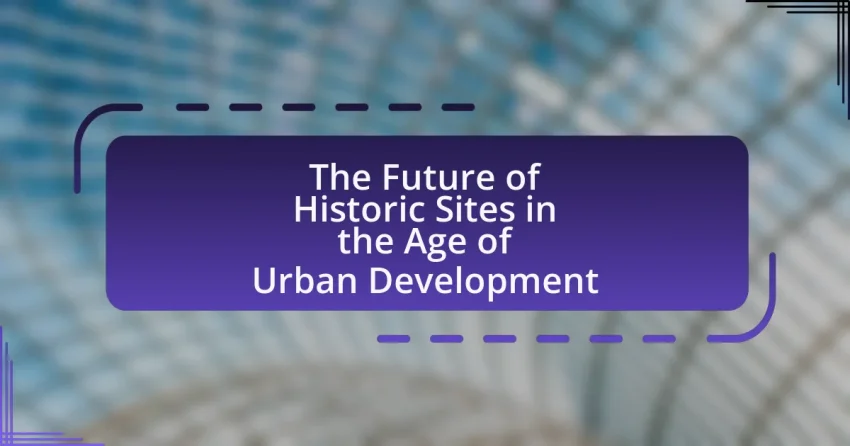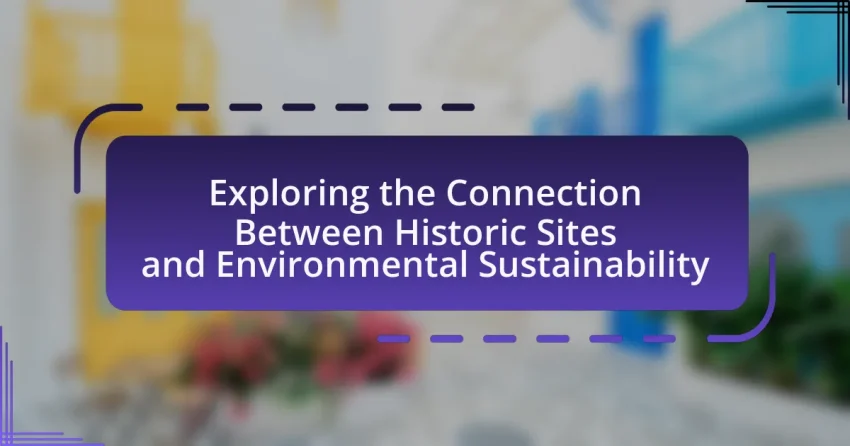The article explores the diverse architectural styles of ancient ruins worldwide, including Classical, Gothic, Romanesque, Byzantine, and Mesoamerican designs. It examines how different cultures influenced these styles through unique materials and construction techniques, highlighting key characteristics of Roman and Greek architecture. Notable ancient ruins such as the Parthenon, Colosseum, and Machu Picchu are discussed, along…
Cultural Heritage
Description could not be generated due to an error.
The Role of UNESCO World Heritage Sites in Preserving Cultural Identity
UNESCO World Heritage Sites are locations recognized for their exceptional cultural, historical, or scientific significance, playing a vital role in preserving cultural identity. This article explores how these sites contribute to cultural identity by safeguarding heritage, fostering community pride, and promoting intergenerational transmission of traditions. It outlines the criteria for designation as a World Heritage…
The Future of Historic Sites in the Age of Urban Development
The article examines the challenges faced by historic sites amid urban development, highlighting the tension between preservation and modernization. It discusses the negative impacts of urbanization, including physical destruction and alteration of historical context, while emphasizing the importance of preserving cultural heritage for community identity and economic benefits. Strategies for balancing urban growth with historic…
The Evolution of Historic Preservation Laws Globally
Historic preservation laws are regulations aimed at protecting and conserving buildings, sites, and structures of historical, cultural, or architectural significance. This article explores the evolution of these laws globally, highlighting their historical context, key principles, and the influence of cultural values. It examines how preservation laws have adapted over time in response to societal changes,…
The Influence of Historic Sites on Contemporary Art and Culture
The Significance of Oral Traditions in Preserving Cultural Heritage
Oral traditions are practices of transmitting stories, histories, and cultural knowledge through spoken word, playing a vital role in preserving cultural heritage and identity. This article explores the significance of oral traditions, highlighting their differences from written records, key characteristics, and various forms such as storytelling, folklore, and songs. It examines how these traditions foster…
The Contribution of Historic Sites to Local Economies
Historic sites play a crucial role in bolstering local economies through tourism, job creation, and business stimulation. Heritage tourism contributes over $171 billion annually to the U.S. economy, supporting millions of jobs and enhancing local commerce. The article explores the direct economic impacts of historic sites, their influence on job creation, and the benefits they…
Exploring the Connection Between Historic Sites and Environmental Sustainability
The article explores the connection between historic sites and environmental sustainability, highlighting how these sites promote conservation practices and cultural heritage awareness. It discusses various sustainable management strategies employed at historic sites, such as the use of renewable energy, waste reduction, and eco-friendly landscaping, which contribute to both ecological preservation and community engagement. Additionally, the…
How Climate Change Threatens Coastal Historic Sites
Climate change poses significant threats to coastal historic sites, primarily through rising sea levels, increased flooding, and intensified storm events. These factors lead to erosion, structural damage, and the loss of cultural heritage, with notable examples including Jamestown, Virginia, which faces severe flooding and erosion. The article examines the primary threats to these sites, the…
The Relationship Between Historic Sites and National Identity
The article examines the relationship between historic sites and national identity, highlighting how these sites serve as tangible representations of a nation’s history, culture, and values. It discusses the role of historic sites in shaping collective memory, fostering national pride, and promoting a sense of belonging among citizens. Key examples, such as Independence Hall and…








